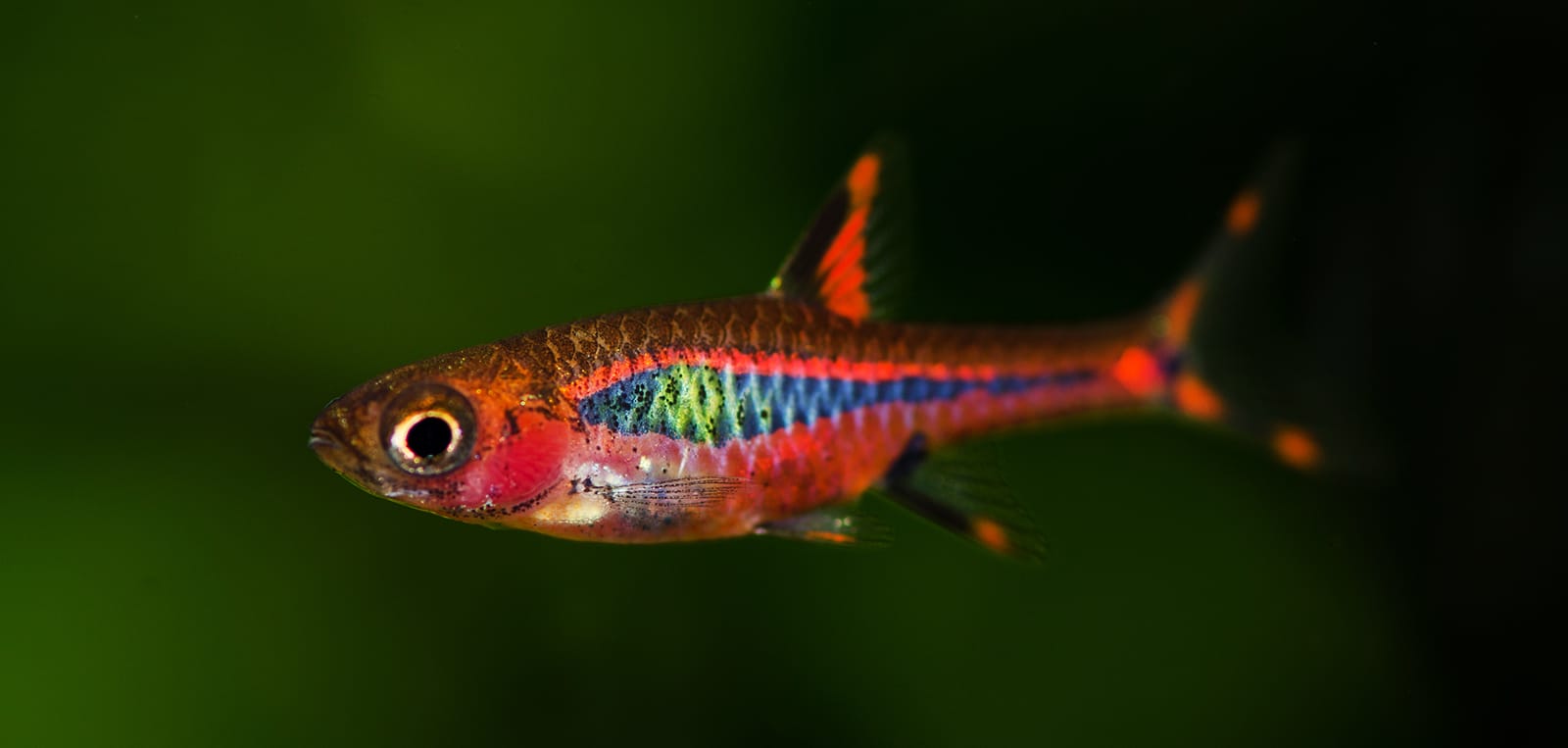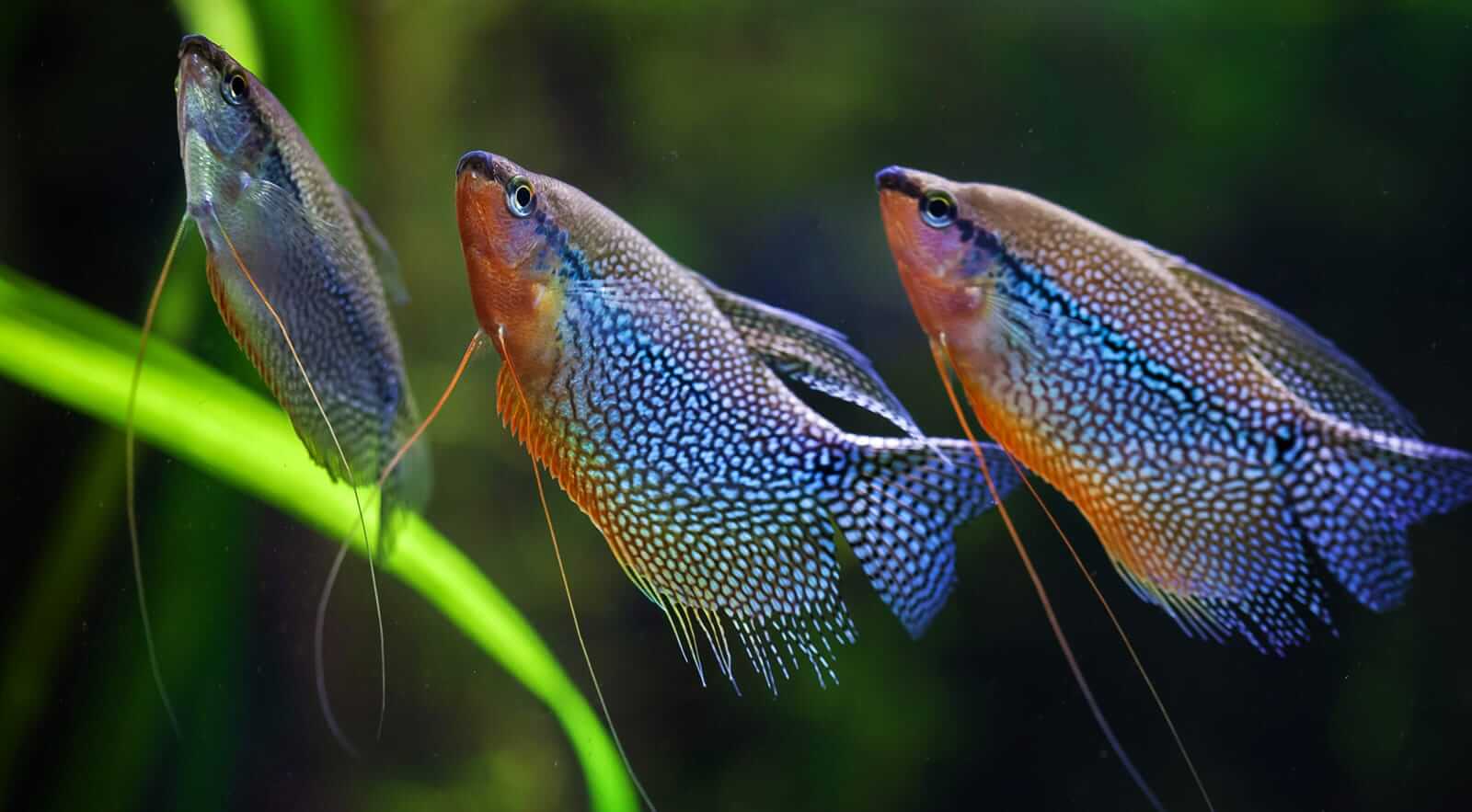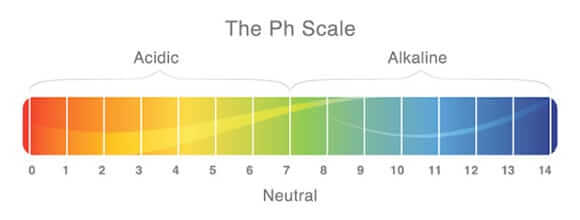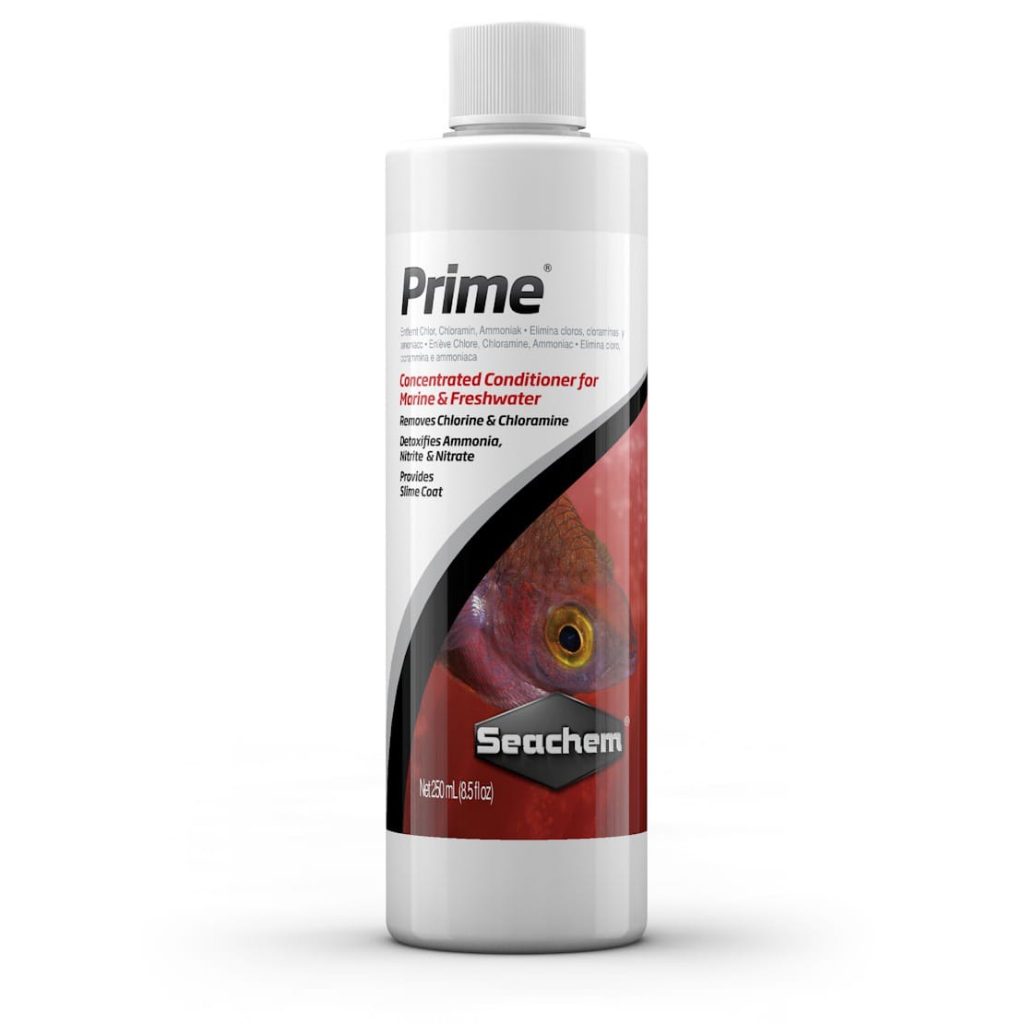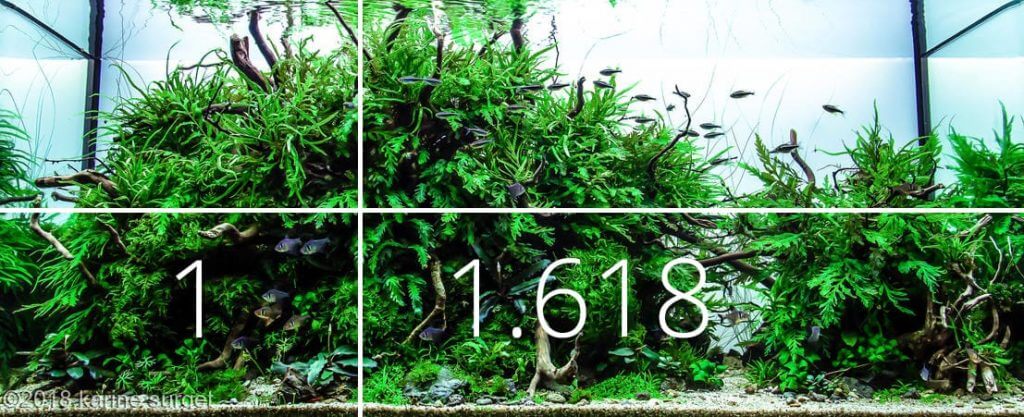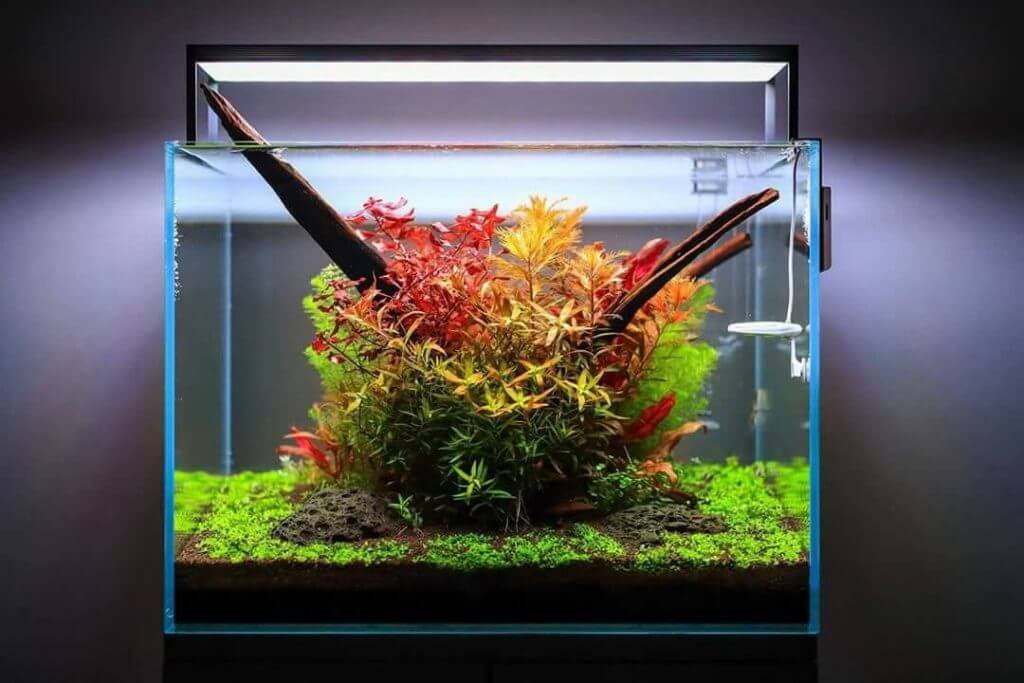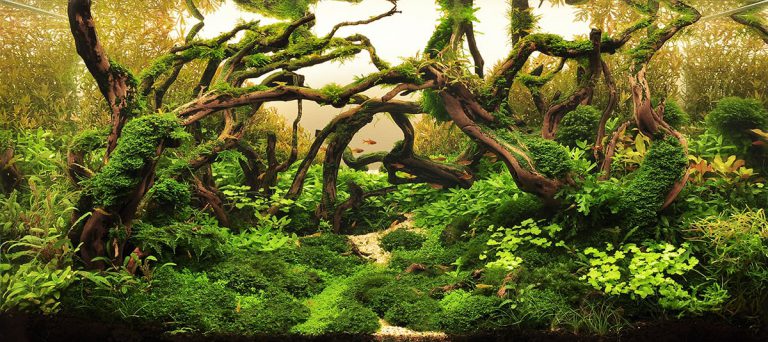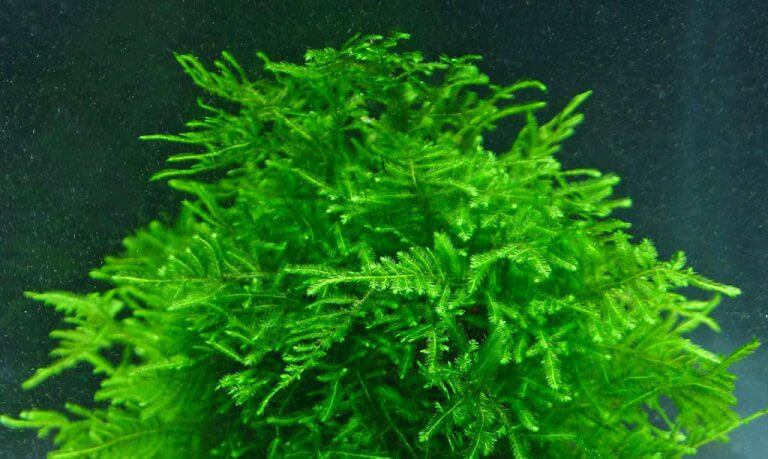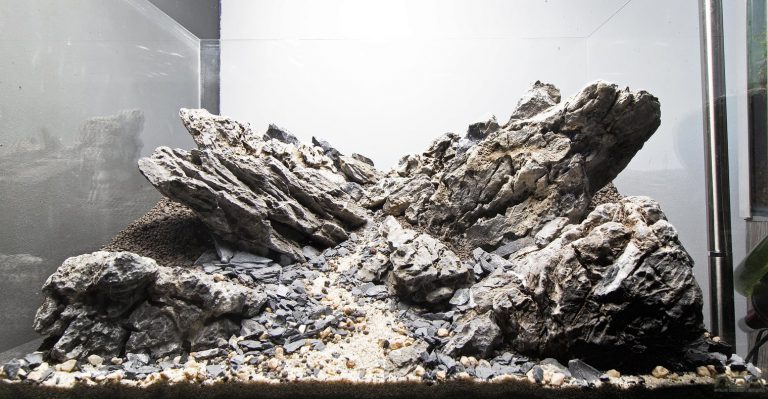When transitioning from regular fish-keeper to aquascaper, there are some things to keep in mind. Aquascaping is an art in itself and it goes beyond just keeping an aquarium at home.
While starting out with aquascaping, beginners tend to get overwhelmed with the extra planted aquarium information they have to go through. So we’ve put together 10 helpful aquascaping tips that will guide beginners and make their entry into the aquascaping world a little smoother.
1. Get to Know Your Aquatic Plants and Fish
There are more than 200 discovered aquatic plants today. You don’t have to study all of them but just a few. The ones that are more likely to be used in a planted aquarium.
Aquatic mosses like Weeping moss, Java moss, Peacock moss and Stringy moss, Fissidens fontanus, Riccia sp. Dwarf, Bucephalandra sp., Hemianthus callitrichoides Cuba, Eleocharis sp.mini.; these are some of the most popular aquatic plants used in aquascaping. So you should start with them.
Go to your local pet store or aquascaping shop and buy them. At this stage don’t think about any aquascaping ideas, just plant them in your aquarium and study them.
See how they acclimatize in your planted aquarium, try to determine their light and CO2 needs, watch how they grow day by day.
Head on to our aquatic plants database and learn more about them. Or grab a book, there are lots of good ones out there:
- Sunken Gardens: A Step-by-Step Guide to Planting Freshwater Aquariums
- Encyclopedia of Aquarium Plants
- Ecology of the Planted Aquarium: A Practical Manual and Scientific Treatise
- 101 Best Aquarium Plants (Adventurous Aquarist Guide)
- Aquarium Plants (Mini Encyclopedia Series for Aquarium Hobbyists)
Freshwater Tropical Fish Acceptable for Your Aquascaping
Regarding tropical fish, surely you know by now which species are more suited for your future aquascapes. Big american or african cichlids will disturb your hardscape and quickly unroot or even eat your aquatic plants as soon as you introduce them into your planted aquarium.
Go for small schooling type of fish, like Least rasbora, Strawberry rasbora or Mosquito rasbora, all three from the Boraras genus. Very small tropical fish which are perfect for nano aquascaping setups.
Enjoy larger fish? Choose the peaceful Pearl gourami (Trichopodus leerii). They look stunning in groups of 5 or more. Make sure you give them plenty of space (at least 50 litres for 2-3 fish and 100+ liters for bigger groups).
Among cichlids there are though some acceptable species to use in your planted aquarium.
The Ram cichlid (Mikrogeophagus ramirezi) is a colorful fish and very peaceful compared to other cichlids and won’t pick on your plants.
The Freshwater angelfish (Pterophyllum scalare) and Discus fish (Symphysodon) are great choices for large planted aquariums of 250 liters and more.
Other freshwater tropical fish that go well with planted aquariums and are heavily used in aquascaping today include the following:
- Ember tetra (Hyphessobrycon amandae), a small fish belonging to the Hyphessobrycon genus
- Cardinal tetra (Paracheirodon axelrodi), very popular tropical fish from the characin family
- Rummy-nose tetra (Hemigrammus rhodostomus), a cute tetra fish which grows up to 5 cm in length
- Green neon tetra (Paracheirodon simulans),with it’s gorgeous blue color that creates a great contrast with the green of the plants
- Three-lined pencilfish (Nannostomus trifasciatus)
2. Find Out More About the Aquarium Water Parameters & Chemistry
Don’t go for the chemist status here, but some basic knowledge about your aquarium water chemistry will only help you in the long run.
Here are the main water parameters and chemistry details you must remember:
Nitrogen Compounds
There are 3 main elements to measure: Ammonia, Nitrite and Nitrate. All 3 play a major role in the Nitrogen cycle, or how it is commonly referred to as Cycling your aquarium.
Ammonia (NH3) results from nitrifying bacteria breaking down aquarium waste like uneaten food, fish excrement and rotten plant leaves. After the aquarium is fully cycled, ammonia should never be detectable.
Nitrite (NO2) is the product of the second stage in the nitrogen cycle. With the help of the Nitrosomonas bacteria, the ammonia is broken down into nitrites. While not as toxic as ammonia, make sure you don’t get values higher than 0 ppm as even a 0.5 ppm reading can be harmful to your fish.
Nitrate (NO3) is the 3rd and last stage in your aquarium cycling process. The bacteria responsible for converting nitrites into nitrates are called Nitrospira and Nitrobacter.
Detecting nitrates in your planted aquarium is quite common, and this nitrogen compound is less toxic to your aquarium fish. Nitrate is also the main cause for algae blooms and green aquarium water.
To lower your nitrates amount do weekly large (50% or more) water changes.
Water pH Value
Your aquarium water (H2O) is composed of hydrogen and oxygen molecules. A neutral pH value of 7.0 means that the water contains an equal amount of hydrogen ions (H+) and hydroxide ions (OH-).
pH is always changing and its two other states, acid and alkaline, are determined by the increasing of the number of hydrogen ions (acid water – low pH) or increasing the number of hydroxide ions (alkaline water – high pH).
Frequent variations in the aquarium water pH value can result in higher stress levels for your fish or even death. Generally, a pH range of 6 to 8 is tolerable and acceptable for most fish species.
Water Hardness (GH)
The general water hardness value (GH) in your aquarium is determined by the concentration of dissolved calcium and magnesium minerals.
A low amount of these minerals makes the water soft (0-50 ppm) while higher concentrations cause the water to become hard (450+ ppm).
Water Carbonate Hardness (KH)
KH is the measurement of dissolved carbonate and bicarbonate ions in your aquarium water, and is usually known as the buffering capacity.
The KH value is directly related to your water’s pH, and will determine its variation. A higher KH results in a more stable pH value, but when KH drops, so does your pH.
That’s why when having trouble with low pH values in your aquarium water, you should also check for KH levels.
Phosphate Compounds in Your Planted Aquarium
Phosphate is a result of the mineralization of waste matter from within your planted aquarium including dead plant leaves, bacteria, fish excrement, uneaten food etc.
You should strive to keep phosphate levels in your planted aquarium at no more than 2-3 ppm. Higher levels will promote algae growth.
Chlorine / Chloramine
Chlorine is a chemical element that water companies use to disinfect tap water. Both chlorine and chloramine are harmful to your fish so you should always neutralize the water before aquarium use.
You can easily get rid of chlorine by keeping the water in an aerated bucket as the chlorine airs out quickly.
Chloramine, which is a compound of chlorine and ammonia, is harder to get rid of as it won’t air out even if you age the water for weeks.
Seachem Prime is water conditioning product that help in removing chloramine from your tap water making it safe for your aquarium fish.
3. Learn the Basic Aquascaping Design Principles: Rule of Thirds and Focal Points, Golden Ratio and Contrast
Aquascaping may be a form of art in which imagination and creativity play an essential role, but mastering the backbone of this process is elementary if you want to be successful. Measure is very important in nature, and aquascaping makes no exception.
You want your tank to not only please your eye, but make it wonder in the right places. You want your fish to feel comfortable; you want your plants to grow to their full potential.
You can do all that by following a set of truly mathematical rules. Yes, before being wonderful, unpredictable and diverse, nature is mathematical.
The Rule of Thirds in Aquascaping
The rule of thirds is a great composition technique and refers exactly at how we can use imaginary guidelines so that we know how to place certain elements within our scape in such a way that we are able to control what the eye of the viewer sees.
In order to understand how the rule of thirds works, try depicting an image as divided into nine equal parts by two equally spaced horizontal lines and two equally spaced vertical lines.
The purpose of these imaginary lines is actually to locate the intersection points of the grid, where you can establish the focal point of the image.
A focal point is an invisible visual mark which anchors the viewer’s gaze first and from which the viewer’s eye can glide towards other points of interest, making the viewer’s experience more interesting, captivating, relaxing and pleasing.
Placing the focal point in the middle of your tank would take away from what is happening around.
Aquascaping and the Golden Ratio
Simply put, the golden ratio is a special number obtained by dividing a line into two parts in such a way that if you divide the longer part by the smaller part the result is equal to the whole part divided by the longer part.
This special number is approximately equal to 1.618.
In both art and mathematics as well as in nature, the golden ratio is strictly connected with the creation of a focal point. In aquascaping, this would be the point the eye is directed towards at a first glance.
Contrast in Your Planted Aquarium
Contrast in aquascaping is a very important thing to keep in mind. There are 2 types of contrast which you can easily apply for you planted aquarium:
Contrast of Size
Think of an Iwagumi layout, the contrast between the size of the rocks (Big) and the size of the aquatic plants used, usually carpeting plants (Small).
Contrast of Color in Aquascaping
This is an easier type of contrast which you can apply to your own aquascapes. For example: the color contrast between the brown (light or dark) of the aquarium driftwood and the green of the aquatic plants.
Or think how the green of the plants stand out against the grey of the rocks. By far the greatest color contrasts are made between a lighter and a darker color.
There is a good number of color combinations you can try and the easiest way to find out what works best is to sketch it or draw it on a piece of paper, which we’re gonna talk about later in this article.
The most renowned styles of aquascaping make use of the rules described above. Whether we are talking about the Nature Aquarium, Iwagumi or Dutch style, they all start with the setting of focal points by implementing the golden ratio rule and then creating a strong contrast.
4. Learn From the Aquascaping Masters
We all have heroes in our lives, personal and professional alike. They inspire and drive us to move forward with our passion.
Unmistakably, in the art of aquascaping, the greatest master is Takashi Amano. The creator of the Nature Aquarium, Amano was a true pioneer in the aquascaping world.
With a true innate passion and japanese precision, he created some of the greatest planted aquariums the world have ever seen.
His final creation, Florestas Submersas, a giant U-shaped nature aquarium located in the Oceanário de Lisboa, Portugal, is a true testament to his great vision and craftsmanship.
With the rise of social media, is very easy these days to keep track of and follow prominent figures in aquascaping like:
- Filipe Oliveira @faaoaquascaping: Portuguese aquascaper Filipe Oliveira has enough years under his belt to make him a prominent figure in the aquascaping world. Filipe is best known for creating the Tree Aquascape Style, giving him the nickname Tree Man.
- Oliver Knott @ok_aqua: Needing no introduction, Oliver is a veteran German aquascaper with decades of experience, who now hosts aquascaping workshops and events all over the world.
- George Farmer @georgefarmerstudios: George is a professional aquascaper from the UK and a regular youtuber. A former military man, he gave it up to follow his passion and he’s now influencing and educating people from around the world with his vast experience in the aquascaping field.
- Jurijs Jutjajevs @juri_js: professional aquascaper from Germany with over 20 years in the aquarium hobby. He is now a full-time self-employed aquascaper, social media manager for Tropica, podcaster and youtuber. We recently did an interview with him, check it out here to learn more.
Get to know more people involved in aquascaping by reading our article about 15 Aquascaping Profiles to Follow on Instagram.
5. Don’t Get Discouraged by Aquarium Algae
Briefly defined, aquarium algae are a distinct group of aquatic organisms that have the ability to carry out photosynthesis and should naturally occur in your planted aquarium.
It will happen sooner or later and we all went through the agony of trying to understand what went wrong in our planted aquarium.
But instead of taking the angry approach and giving up aquascaping altogether, make an effort to figure out the main causes of algae growth in your planted aquarium and the best ways you can prevent it from happening.
Some of the main causes for algae growth getting out of hand in your planted aquarium include:
- Aquarium is not fully cycled
- Your planted aquarium is overpopulated with fish
- You are overfeeding the fish which results in ammonia spikes
- The light is too bright or you keep the light on for too long
- Water is high in nutrients
- Aquarium is placed in direct sunlight
- Not doing enough water changes
How to deal with aquarium algae
6. Sketch Your Aquascape on Paper First
Like an architect who creates blueprints first, before laying out a house, you should take the same approach with aquascaping.
The best thing about sketching your next aquascape is that you can make as many mistakes as you want, which will be easily repaired by using an eraser.
As opposed to laying out your hardscape and then deciding that you want to replace one stone with another and by doing so disturbing the aquasoil.
So grab a piece of paper and pencil and start sketching your next aquascape layout BEFORE heading towards your aquarium.
7. Don’t Overstock Your Planted Aquarium
In aquascaping you should always keep your focus on aquatic plants rather than the fish.
And at the start of a new aquascape is always better to have more plants than fish, especially long stem plants, which have a higher growth rate which will help in absorbing the extra nutrients from the water.
Overstocking your planted aquarium will only lead to extra nitrites and nitrates being accumulated in the water making it a suitable environment for algae blooms.
8. Join Online Forums and Attend Aquascaping Workshops
Head on to the internet and do some google searches for aquascaping websites and blogs. You’ll find plenty.
Browse aquascaping forums and join in the conversation. There are lots of people there just starting with aquascaping and others more experienced. There’s a lot to learn.
Good aquascaping forums to start with:
- Aquascaping World Forum
- UKAPS.org Aquascaping Forum
- The Planted Tank Aquascaping Forum
- Aquatic Plant Central Aquascaping Forum
Acquire some hands-on experience by attending local aquascaping workshops run by the prominent figures in aquascaping today, like Filipe Oliveira, Oliver Knott, George Farmer and Jurijs Jutjajevs.
9. Visit Your Local Aquascaping Shop for Inspiration
Many aquascaping shops have their own nature aquarium galleries. Go ahead and plan a visit and take in the live inspiration.
And while you’re there, ask the shop’s staff for advice regarding your own aquascaping setup, algae problems and tips about technical equipment.
Make a shopping list and find out how much would cost you to build your first nature aquarium, or improve the one you already have at home.
10. Don’t Use a Built-in Flash When Doing Aquarium Photography
When taking photos of your planted aquarium make sure to not use the build-in flash from your camera.
If your flash shoots from in front of your aquarium then you will see reflections in your photography. So it’s better to use an external flash unit which you can position so as to shoot from the top of your planted aquarium.
Check out our article about how to take better photos of your planted aquarium.



